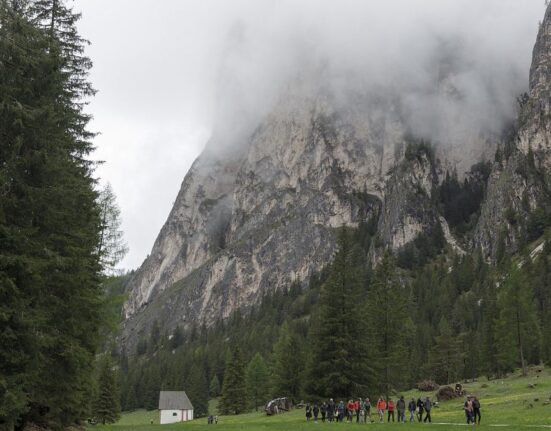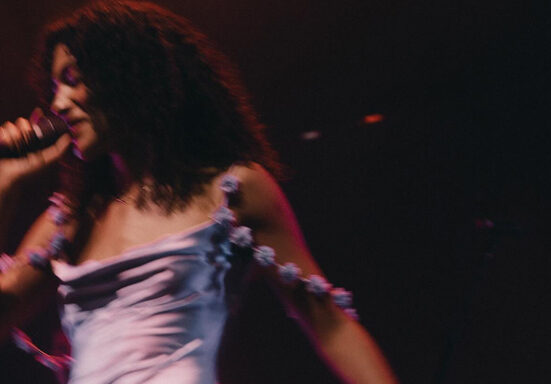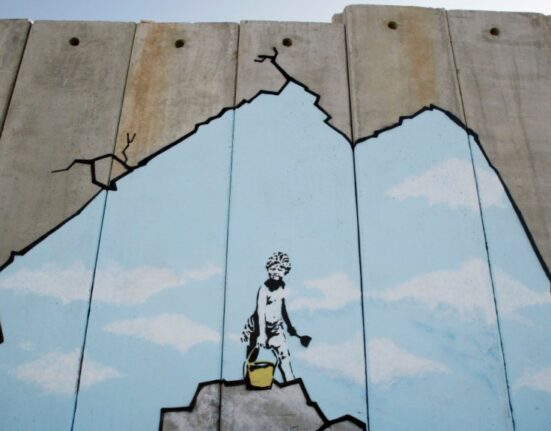It has been one year since the rebel Rapid Support Forces and the Sudanese Armed Forces began fighting in the tri-city of Omdurman, Khartoum, and Bahri, forcing inhabitants to make life-or-death decisions — should they, could they, evacuate their houses and flee to a safer place? Many who had the financial means to make this decision did so, making painful journeys across the desert to Egypt, Kenya, or other parts of the country.
The majority fled to Cairo, assuming that Egypt would be the best place to either settle or wait out the war, since Egypt is an Arabic-speaking, Muslim-majority country with similar customs and a shared history. However, many Sudanese found that Egyptian society was unwilling to meet them with the respect they deserve. OkayAfricaspoke to three Sudanese creatives in Cairo who shared their experiences and obstacles when entering the creative industries in Egypt.
“The people in Nairobi are having a much better time,” says Hadeel Osman, a creative director, cultural manager, and sustainable fashion consultant currently based in Cairo. “We’re all equally struggling with the displacement and financially, but in Nairobi they don’t feel like the others; Sudanese in Kenya are Kenyan by proximity. They’re not looked down on, the artistic spaces over there are very open and inviting, in contrast to the Egyptian spaces. Whether you’re a visual artist or in the corporate world, you’ll find your environment and galleries to believe in you and invest in you.”
Photo courtesy of Tayeb “TooDope” Hajo, Vice.
Musician and visual artist Tayeb “TooDope” Hajo.
Tayeb “TooDope” Hajo, a musician and visual artist now based in Nairobi, echoes Osman’s observations that blending in with Nairobi is easier than blending in with Cairo. “Even trying to come to Egypt was a lot harder than coming to Nairobi. I haven’t faced any problems and don’t know anyone that has. They’re lenient here towards refugees and easy-going.”
Hajo left Sudan three weeks after the war started. “A week of denial, a week of figuring it out, and a week of actually doing the commute,” he shares. He had planned to go to Lebanon to do a music video with VICE, which helped him make it out of the country through Port Sudan.
Hajo was supposed to travel to Egypt afterwards, but he could not apply for a tourist visa and ended up in Kenya instead. There, he easily tapped into an existing community of people he already knew from afar. “There are a few people and organizations that are willing to invest in Sudanese art,” he says.
Image by Tayeb “TooDope” Hajo.
Boom Bap to Boom Bomb by Sudanese musician and visual artist Tayeb “TooDope” Hajo.
Osman agrees: “There’s also a lot of networking that happens in Nairobi. Compared to Egypt where you really have to put yourself out there, in Kenya it’s just a matter of saying hello. Someone will approach you and ask you what you’re doing. It’s a cultural difference.”
Rahiem Shadad, a curator and cultural manager who used to run the Downtown Gallery in Khartoum, was on holiday in Cairo when the war broke out in the capital. Unable to return, he remained in Egypt for three months, then left for Portugal to work on an exhibition of Sudanese art. Meanwhile, Egypt stopped issuing visas to Sudanese passport holders and the authorities informed him that he would not be able to fly back.
Shadad decided to go to Kenya, because he could easily obtain a visa and had friends there. “Nairobi was kind and welcoming, I managed to settle really fast,” he says. “Most of the Sudanese people that relocated to Nairobi are cultural professionals, which translates into the type of impact they are creating.”
Photo by Rahiem Shadad.
The Sudanese community in Nairobi is putting on exhibitions to highlight the diversity of Sudanese visual arts.
The community in Nairobi has organized film screenings, exhibitions, concerts, fundraising events, and formed an initiative called The Rest which supports artists through small monthly stipends and workshops for mental wellbeing and English courses. “It is similar to the model of an artist residency and the main focus topics are surrounding Sudan and the issues of today,” explains Shadad. “We have designed this program ‘till August and after which we hope that the community is able to become independent.”
However, Shadad criticizes Nairobi more than Osman and Hajo, saying that he still notices a slow response of cultural workers to the Sudanese situation. “Some cultural activities I worked with prior to the war are yet to even check up on me after being here for nine months,” he shares. “We did however manage to work with multiple people and groups and somehow found the right communities to call allies.”
Tibian Bahari, a mixed media artist, initially came to Nairobi to contribute to a Sudanese group exhibition, commemorating the Sudanese literary school that emerged in the 1960s, known as The Forest and Desert School. When the war broke out, she had to remain in Kenya.
Photo courtesy of Tibian Bahari.
Tibian Bahari is a Sudanese mixed media artist with a background in International Relations and political science. She grew up in Lagos, Nigeria and moved to Khartoum in 2002.
“Nairobi has been a platform for artists, and most specifically Sudanese artists. since the ‘90s. Many notable Sudanese artists have already, to a certain degree, paved the way for other younger generations of artists to continue in their footsteps,” says Bahari. “It is Nairobi’s default nature to integrate within equal minded communities. I am personally thankful, despite the tragedy of war, that the influx of Sudanese artists and creatives has shaped a shifting community. Many artists, including Galal Yousif, Idreesy of El MastabaTV, Bakri Jack, Hani Khalil, Yasir Algarai have been displaced here in Nairobi — and I mention their names, as they have been such significant cultural shifters in Sudan. As we’re all integrating within Nairobi, the art has been heavily influenced by community and peace making.”
In her work, Bahari intellectualizes feelings as a compass to understanding formal and informal movements and activities. She particularly focuses on caretaking as a communal act. “The reason Nairobi is loud with Sudanese artists is because they are truly and genuinely (physically, psychologically, and spiritually) dedicated to Sudan,” she says. “I need you to understand that we have all been disrupted, and that has truly been a mental fatigue. The ethics of care is completely implemented in Sudanese communities.”
Photo courtesy of Rahiem Shadad.
Rahiem Shadad is a former mechanical engineer and Khartoum’s leading curator.
While it was easier for creatives to find ground in Nairobi after being displaced by the war, Shadad says that passport politics remain a hindrance to working freely. Still, there’s a shared sense of gratitude to how Kenya has allowed space for Sudanese communities to form, since before, but especially after the war.
To the question of whether Nairobi has been kind to her, Bahari says: “Nairobi has influenced the way I interpret, perceive, and ultimately integrate within communities. Kindness is not the answer. Nairobi has strengthened me.”
From Your Site Articles
Related Articles Around the Web







